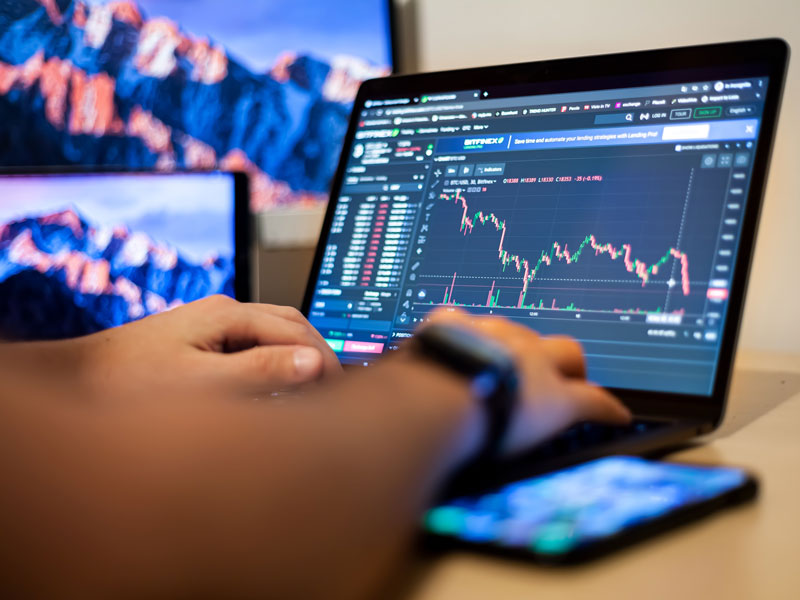
Mastering Forex Trading: A Comprehensive Guide for Beginners
Forex trading, or foreign exchange trading, is a complex yet intriguing financial endeavor that attracts traders from across the globe. The potential to profit from fluctuations in currency values is appealing, but it also comes with significant risks. In this guide, we will explore the basics of forex trading, the necessary tools and strategies, and the importance of choosing the right broker, such as learn forex trading Trading Broker ZA.
What is Forex Trading?
Forex trading involves the buying and selling of currency pairs in the international currency market. Unlike traditional stock trading, the forex market operates 24 hours a day, five days a week, making it accessible to traders at any time. The primary objective of forex trading is to exchange one currency for another with the intent of making a profit based on changes in exchange rates.
Understanding Currency Pairs
In forex, currencies are traded in pairs, such as EUR/USD (Euro/US Dollar) or GBP/JPY (British Pound/Japanese Yen). The first currency in the pair is known as the base currency, while the second currency is the quote currency. The price of a currency pair indicates how much of the quote currency is required to purchase one unit of the base currency.
Types of Currency Pairs
- Major Pairs: The most traded pairs that usually include the US dollar, such as EUR/USD, USD/JPY, and GBP/USD.
- Minor Pairs: Pairs that do not include the US dollar, like EUR/GBP and AUD/NZD.
- Exotic Pairs: Currency pairs that involve a major currency and a currency from a developing economy, such as USD/ZAR (US Dollar/South African Rand).
The Importance of Forex Brokers
The choice of a forex broker is crucial for successful trading. Brokers provide the platform for trading, offer leverage, and facilitate transactions in the forex market. When selecting a broker, consider factors like regulation, trading fees, available currency pairs, trading platforms, and customer support.
Key Considerations When Choosing a Broker
- Regulation: Ensure that the broker is regulated by a reputable financial authority to safeguard your investments.
- Trading Fees: Compare spreads, commissions, and overnight fees to find a cost-effective option.
- Platform Features: Look for a user-friendly trading platform with advanced charting tools and analytical features.
- Customer Support: Opt for a broker that provides reliable customer service through multiple channels.
Basic Strategies for Forex Trading
Once you’ve chosen a broker and understood how the forex market operates, it’s important to develop a trading strategy. Here are some fundamental strategies to help you get started:
1. Day Trading
Day trading involves opening and closing positions within the same trading day. Traders rely on short-term price movements and aim to profit from small fluctuations. Day trading requires a solid understanding of technical analysis and the ability to make quick decisions.
2. Swing Trading
Swing trading focuses on capturing price swings in the market over several days or weeks. Traders typically look for trends and patterns to make informed decisions. This strategy allows for more flexibility, as positions are not always tied to immediate market movements.

3. Scalping
Scalping is a high-frequency trading strategy where traders aim to profit from small price changes throughout the day. Scalpers open multiple trades, holding them for very short periods often just a few seconds or minutes.
4. Position Trading
Position trading takes a longer-term approach, where traders hold positions for weeks, months, or even years. This strategy is less concerned with short-term fluctuations and focuses on long-term market trends.
Utilizing Technical and Fundamental Analysis
Understanding market indicators is vital for effective forex trading. Two primary types of analysis are used:
Technical Analysis
Technical analysis involves studying historical price movements and using various indicators, such as moving averages, RSI, and MACD, to predict future price movements. Traders analyze charts to identify trends, support, and resistance levels.
Fundamental Analysis
Fundamental analysis focuses on economic data, geopolitical events, and other factors that could influence currency values. Key indicators include GDP growth rates, unemployment rates, and interest rates.
Risk Management in Forex Trading
Risk management is a crucial aspect of forex trading that can help you protect your capital and minimize loss. Here are some effective risk management techniques:
- Use Stop-Loss Orders: A stop-loss order automatically closes your position at a predetermined price to limit losses.
- Position Sizing: Determine the appropriate amount of capital to risk on each trade based on your overall portfolio and risk tolerance.
- Diversify Your Investments: Avoid putting all your capital into one currency pair; instead, spread your investments across multiple pairs.
Getting Started with Forex Trading
To begin your forex trading journey, follow these steps:
- Open an Account: Choose a reliable forex broker and create a trading account.
- Fund Your Account: Deposit funds using the broker’s payment methods to start trading.
- Practice with a Demo Account: Use a demo account to practice trading without risking real money. This will help you become familiar with the trading platform and develop your skills.
- Start Trading Live: Once you feel confident, begin trading in the live market with real funds.
Conclusion
Forex trading offers immense opportunities for profit but comes with significant risks. By educating yourself about the forex market, developing a solid trading strategy, and carefully managing your risks, you set the stage for a successful trading career. Remember to choose a reputable broker and keep refining your skills through practice and continued learning.
As you embark on this exciting journey, stay disciplined, remain patient, and always practice responsible trading. Happy trading!